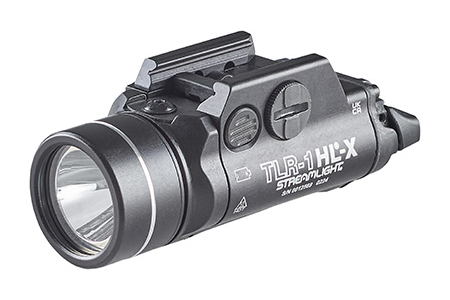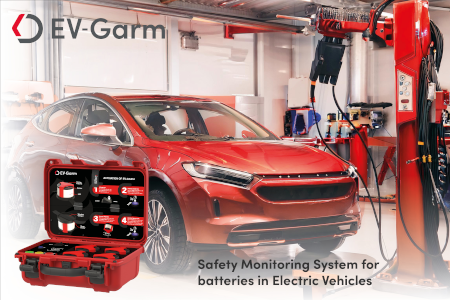Of all the world’s industries, the petrochemical industry is probably one of the most dangerous in terms of fire risk; as a result it attracts a commensurate level of research into fire prevention and fighting. But even with the strictest safeguards in place accidents can happen and unfortunately when they do they are often quite devastating.
This devastation is not just restricted to the actual refinery or storage depot, in many instances, significant fires can have a hugely detrimental effect on much of the outlying surrounds and can even nudge economies in the wrong direction. In a previous feature, I mentioned a fire at a leading worldwide plastics raw materials supplier; the knock on effect of this event was literally felt the world over as companies scrambled to source alternative supply routes.
Looking back over recent history, one of the most memorable (for all the wrong reasons) oil-based fires was after Iraq’s ‘Scorched Earth’ withdrawal from Kuwait after the first Gulf War. The skyline above the Kuwaiti oil fields was a surreal nightmare, like something from a post-apocalyptic movie. After ten months alight, the environmental impact was tremendous and the financial impact was just as devastating. Kuwait lost some six million barrels (950,000 m3) of oil each day and had to call upon privately contracted crews to extinguish the fires, at a total cost of $1.5 billion.
The basic fire equation/pyramid states that you need fuel, air and an ignition source. At refineries fuel and air are in abundance, so it is understandable that the ignition sources or opportunities are the easy part of the equation to tackle. It is for this reason that safety solutions at refineries and petrochemical plants often employ double and even triple redundancy to help reduce the risk even further.
However, like all systems that rely on human interaction, there is always the scope for human error. It is unfair though, to point the finger of blame at operators. In some instances fires have been started by a completely unforeseen collection of coincidences, which could not possibly have been considered in contingency planning. For this reason, robust and highly effective active and passive fire-fighting techniques have to be deployed.
Looking from above, the major starting point of any fire-fighting system is the overall control solution. In most instances, safety systems and fire-fighting solutions can exist in parallel or as combined disciplines, with both interacting with each other to achieve a common objective. One example is the Triple Modular Redundant (TMR) controller from Rockwell Automation, which has already seen widespread use in refineries and other petrochemical installations around the world.
Normally installed as part of an overall control solution, Trusted is designed to provide maximum safety and system availability, using control to minimise system trips and provides high availability, fault tolerance and fail-safe features as part of its intrinsic, safety-related functionality. By minimising nuisance trips or system failures, users can potentially save your operation millions of dollars in lost revenues, equipment replacement and environmental damage while protecting employees. It is designed to meet a wide range of safety requirements and maintain the highest integrity level, even in the presence of multiple system failures.
The Trusted TMR design uses a majority voting process to identify the source of a fault. Random hardware failures will cause one of three control ‘slices’ to react differently to the others. This discrepancy will be captured and reported by the voting system. The Trusted TMR system will always react immediately to contain system faults, helping to ensure it meets safety integrity requirements.
Bespoke fire detection and fighting solutions also exist from multiple suppliers. Most comprise completely integrated panels and control suites linked to multiple sensor variants placed at key points around the site. These systems are designed specifically to detect ignition points and then make the correct decision as to how to fight them based on the combustion source, local assets and employee locations. Multiple alarming scenarios are possible and human interaction can be kept to a minimum due to advanced algorithms and logic calculations.
Even with advanced (and not so advanced) preventative technology in place, fires still happen, so if your advanced fire detection system is on the ball, the next decision is what to use to fight the fire. Like most active fire-fighting solutions, the end user is spoilt for choice – a choice that is normally determined by the fuel source – and in some instances employee locations.
Water mist systems are used in many instances and can be highly effective in the right circumstances, such as smaller contained or localised outbreaks, but in some cases water mist will simply not be up to the job. In these situations many refineries have deluge systems which literally flood the area with large amounts of high pressure water – only the most tenacious fires can withstand this sort of action. Foam systems are also used for particular fire types – such as heli decks and finally, gaseous systems can be used in confined spaces where employees are not present.
As well as the active approach, there are also many passive examples of fire-fighting solutions, such as blast and deflection shields and fire-resistant coverings for primary structural elements. These coverings are particularly important as steel, although very strong in its as-constructed state, can rapidly loose structural integrity when subject to constant high heat.
As I allude in most of the articles I write, there is a huge range of cutting-edge technology out there, most of which you hope never to use. Unfortunately, this technology cannot cater for the random acts of fate, be they human-inspired or just pure coincidence. But if a an issue does arise, there is the technology to spot it before it actually sparks into flame, technology for detecting and containing the flames and technology to put the flames out. If you are not in the oil and gas industry, you really should take a long hard look at what they are using, as you can almost guarantee that any bang they create will be louder than yours so they must have the best possible systems in place – learn from them.











